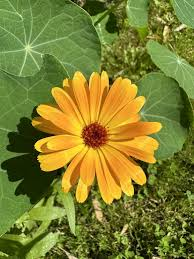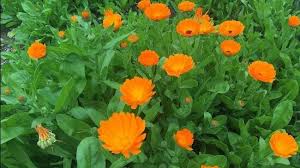Calendula officinalis, commonly known as calendula, is often grown in gardens for its vibrant orange and yellow flowers, but its benefits go far beyond just adding color to the landscape. While many gardeners appreciate calendulas for their beauty, this versatile plant also offers numerous medicinal, ecological, and practical uses that can enhance any organic vegetable garden.
Medicinal Benefits of Calendula
Calendula flowers have been used for centuries for their natural healing properties, especially for skin care. Rich in antioxidants, calendula helps to heal wounds, rashes, burns, and even minor cuts by improving blood circulation and preventing infection. It is commonly found in baby diaper creams, hand lotions, and first-aid ointments due to its soothing effects.
To make your own calendula preparations, start by drying a quantity of the flowers. The process is simple: gather the flowers in the morning when they are fully open, and allow them to dry at room temperature. To ensure they are fully dehydrated, you can use a dehydrator or a warm oven for a couple of hours. Once dry, store the flowers for later use or create an infused oil by placing them in a jar and covering them with olive or grapeseed oil. After 3 to 4 weeks in a warm, sunny spot and daily shaking, strain the oil and use it as a treatment for rashes, skin irritation, or even as a base for homemade lotions.

Although calendula is generally safe, individuals who are allergic to daisies, ragweed, or similar plants should proceed with caution, as they may experience allergic reactions.
Calendula’s Role in the Garden
Calendulas are not just useful above ground but also below, benefiting both the garden ecosystem and soil health. These plants are known to deter insect pests, making them a natural choice for pest control. In studies conducted in Poland, calendulas planted among cabbage helped reduce infestations of aphids, cabbageworms, and diamondback moths. Similarly, in India, calendula extract was shown to deter tobacco cutworms. In your garden, calendulas can act as a natural insect repellent, reducing the need for chemical pesticides.
Calendulas also play a role in soil health. Their roots form beneficial relationships with soil fungi, enhancing the soil’s vitality. In places like China and the USA, calendula has been used to remediate soil contaminated with heavy metals like cadmium. Additionally, studies in Colombia and Spain have shown that calendula plants can suppress harmful root-knot nematodes, improving soil quality for other crops.

Calendulas as a Cover Crop
One of the most practical uses of calendula is as a cover crop. In regions with mild winters, calendulas sown in late spring or early summer often bloom into the fall and self-seed, returning year after year. In areas with colder winters, calendulas die off after a hard frost but leave behind seeds that will grow again in the spring. This makes them an excellent option for gardeners who want a low-maintenance cover crop that benefits both the soil and the ecosystem.
By scattering calendula seeds in vacant areas of your garden, you can quickly establish a crop that helps enrich the soil. As these plants grow and die, they provide organic matter that improves soil structure and health. Calendulas are particularly useful as a fall cover crop, offering the added benefit of enriching the soil during the winter months.
Conclusion
Calendulas are not only a beautiful addition to the garden, but they also offer a wealth of benefits, from medicinal uses to soil enhancement. Whether you’re using them for skin care, as a natural insect repellent, or as a cover crop, these resilient plants can thrive in various conditions and contribute significantly to a healthy, sustainable garden. With their many talents, calendulas deserve a spot in every garden, providing both beauty and practicality.
